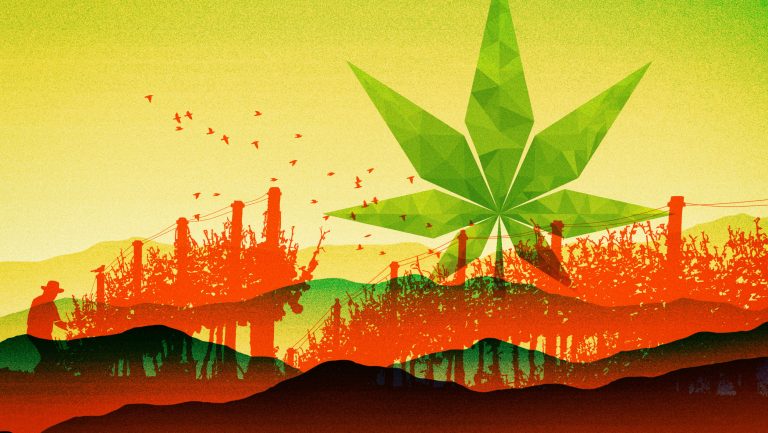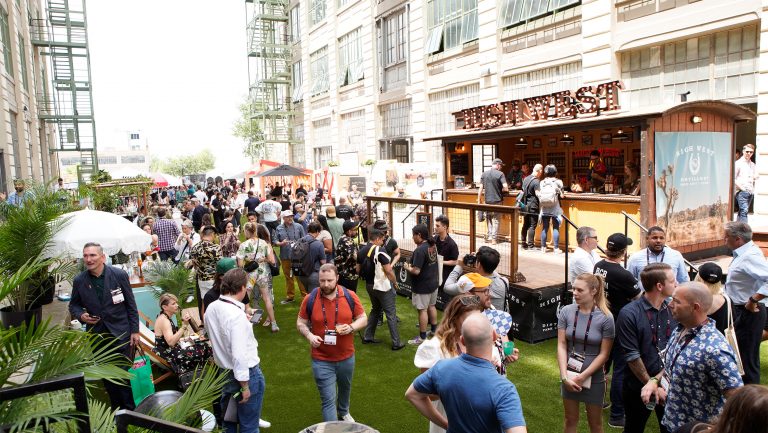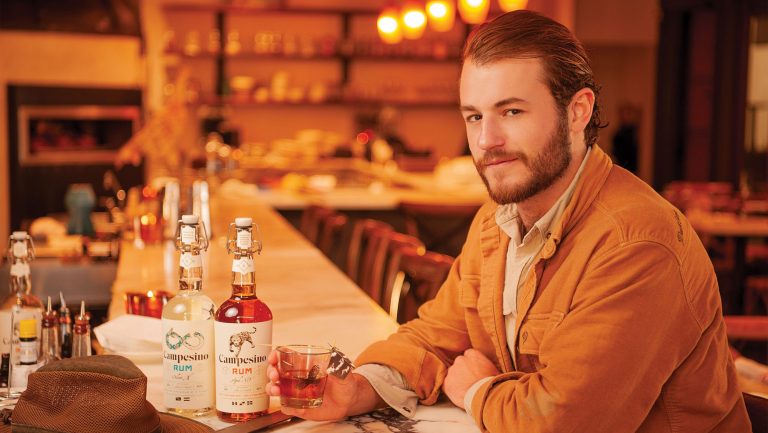Since Colorado voters opted to legalize recreational cannabis in 2012, 10 additional states and the District of Columbia have followed suit, sparking concerns among U.S. vintners that marijuana might one day replace wine as consumers’ relaxation substance of choice. Last week, experts examined the impact of legal recreational cannabis on the wine industry at the Wine & Weed Symposium, held August 8 at the Hyatt Regency Sonoma Wine Country in Santa Rosa, California.
The conference kicked off with a keynote address by Corey Beck, the CEO and winemaking chief at The Family Coppola, parent company of the Francis Ford Coppola Winery in Geyserville, California. In late 2018 the film director and winery owner launched a brand of cannabis flower called The Grower’s Series by Francis Ford Coppola. In the near future, Coppola plans to add prerolled joints and vapor pens to the line. “We chose not to look at cannabis as a competitor,” Beck said, “because if you do, you’re going to miss out. My presentation today is going to be about opportunity.”
Citing figures from Colorado, Washington, and Oregon, the first three U.S. states to legalize adult-use (recreational) cannabis, Beck pointed out that wine sales have remained relatively steady since legal marijuana sales began. According to the Distilled Spirits Council, which studied sales of spirits, beer, and wine as it related to cannabis, per capita sales of wine increased 3.2 percent in Colorado and 0.7 percent in Oregon, while Washington saw a dip of 3.1 percent.

Don’t miss the latest drinks industry news and insights. Sign up for our award-winning newsletters and get insider intel, resources, and trends delivered to your inbox every week.
Rather than blaming sluggish sales growth on cannabis, Beck said, wine producers should be looking at what’s next. “I’m fourth generation from the Napa Valley, and we used to have prunes and walnuts here, and very little grapes,” Beck told SevenFifty Daily after the event. “So what’s the next evolution?”
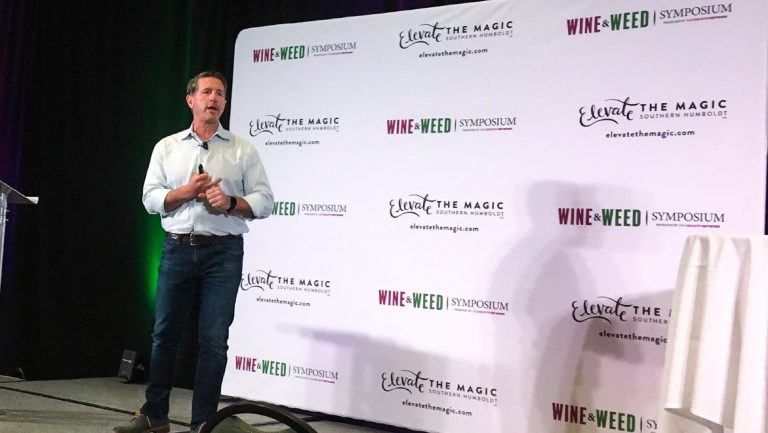
Instead of living in fear that cannabis will cut into wine’s market share, Beck said that growers and vintners should seize opportunities to create new products and experiences, as Coppola has done. “Take a risk,” he said. “That’s what we did, and that’s what we’re going to continue to do. I believe that wine and cannabis can work together.”
Consumption Trends
In a symposium session called The Cannabis Impact on Wine, Jessica Lukas, the vice president of consumer insights for BDS Analytics, a cannabis market research firm based in Boulder, Colorado, provided data-driven information on how marijuana is affecting the beverage alcohol category.
Lukas said that while cannabis has had “no distinguishable impact” on alcohol sales, and that the beverage alcohol industry remains a “giant” compared with the cannabis market, U.S. consumption trends show that there is some cause for concern.
A 2019 BDS report analyzing around 4,500 consumers in states where cannabis is fully legal (meaning that there is a framework in place for retail sales) found that the percentage of drinkers who also consume cannabis is increasing (from 36 percent to 45 percent in the last year), while the percentage of cannabis consumers who also drink alcohol is decreasing (from 72 percent to 65 percent).
“In fully legal markets,” Lukas said, “two-thirds of the adult population is either currently consuming cannabis or open to consuming cannabis. This is something that everyone in this room really needs to understand, because the impact on alcohol gets bigger and bigger as the population that’s consuming cannabis grows.”
The good news—at least for now—is that those who drink alcohol and use cannabis are less likely to be wine drinkers than consumers of beer and spirits. Of those surveyed who consume both cannabis and wine, 17 percent said they decreased their wine consumption and 76 percent said their level of consumption has stayed the same.
“Cannabis consumers are less and less likely to consume alcohol—I wouldn’t say because of cannabis,” Lukas said, but potentially for the reasons behind their cannabis use, such as concerns about health and wellness. Many people also use marijuana for pain management. “We all need to accept and realize,” said Lukas, “that every dollar spent on cannabis is not a dollar taken away from beverage alcohol.”
Pairing Cannabis with Alcohol
While cannabis isn’t necessarily a substitute for alcohol, the 14 percent of consumers who frequently pair the two on the same occasion—for example, drinking a glass of wine while taking a couple of hits from a vape pen—are cutting back on alcohol consumption. According to BDS data, 45 percent of those survey respondents consume less alcohol when they pair the two substances. However, if you look at the bigger picture—45 percent of only 14 percent, or 3 percent of the total surveyed—the trend is less alarming.
Lukas also noted that cannabis is currently hampered by policies and regulations that don’t affect the beverage alcohol industry. For example, people can’t consume cannabis in public places like bars and restaurants. But as the number of cannabis consumers grows to include more women and older generations, the impact on alcohol will increase.
Rather than worrying about the future, Lukas said, wineries should look for collaborations in the cannabis space that align with their brands. For those who don’t want to enter the business, simply following the industry can provide useful insights. “There is a ton that can be learned by looking at the brands and products that are available,” Lukas said, “and understanding how people consume and how they’re behaving over time.”
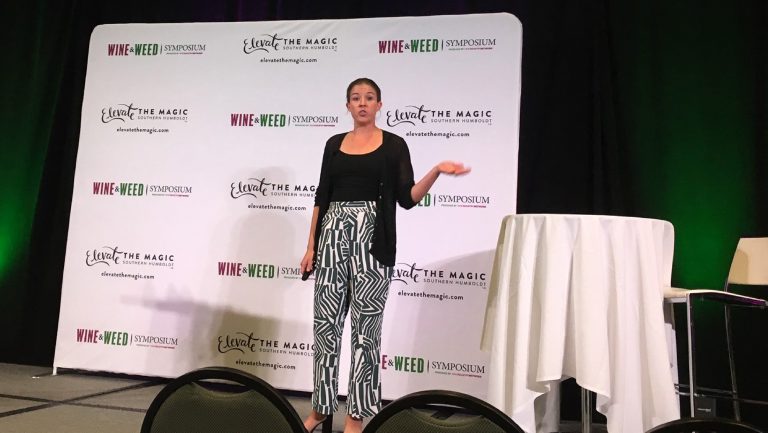
Cannabis’s Impact Beyond Sales
While cannabis isn’t yet having a distinguishable impact on sales, it is affecting the U.S. wine industry in other ways. To gain a broader view of the situation, SevenFifty Daily spoke with winemakers and other industry insiders to ask for their perspectives.
Before adult-use cannabis sales began in California last year, scarcity of harvest labor was already a problem for the state’s grape growers. That situation was exacerbated when some workers switched from picking grapes to trimming cannabis, because the work is less physically demanding and the pay is often better.
According to Tom Rodrigues, the winemaker and owner of Maple Creek Winery in Mendocino County, the situation has gotten worse because of stricter federal immigration policies that are keeping migrant workers in Mexico. With fewer farm workers to share between the wine and cannabis industries, he says, “the ones that are here are commanding more money. They’re getting 25 bucks an hour, when we used to pay them $12 to $15.”
Mark Wisnovsky, the owner of Valley View Winery in Southern Oregon, began growing hemp for CBD applications three years ago, and now he shares labor between his vineyards and hemp fields. (Under the 2018 Farm Bill, it is now federally legal to grow hemp, defined as containing no more than 0.3 percent THC, which is the psychoactive compound in cannabis responsible for its “high.”) “Typically, small and medium-sized vineyards don’t harvest every single day,” he explains, “so it’s hard to get a crew and say, ‘Okay, we’re going to work Monday and Tuesday and you can come back Friday.’ What are they going to do Wednesday and Thursday? They’ll go somewhere else, and then you risk losing them.”
But because the hemp and grape harvests happen at roughly the same time of year, Wisnovsky can get workers to alternate between crops. Besides allowing him to keep a full-time crew that will be available when he needs it, the additional income from hemp means he can afford to give his workers a raise—and pay higher rates than local wine-only producers.
This doesn’t make him popular, however, among his fellow grape growers, who complain at local grower association meetings about the increased cost of labor. Says Wisnovsky, “I raise my hand and say, ‘Go ahead—everyone throw grapes at me or whatever you want to do, because I will tell you right now that hemp has far, far, far greater margins than growing grapes, so I will pay far more.’”
Competition over Real Estate Ramps Up
Real estate prices are also going up—especially in areas where urban wineries and dispensaries coexist. Doug Caskey, the executive director of the Colorado Wine Industry Development Board, says, “Marijuana businesses can afford to pay more for real estate—in cash—than other manufacturing businesses, including wineries.” As a result, wineries are being priced out of some markets.
The issue is similar in San Diego County. Linda McWilliams, the owner of San Pasqual Winery in La Mesa, was renting two buildings adjacent to each other when the city legalized cannabis production in industrial areas. “Our landlord sold the property to people who are planning to do cannabis production,” she says, “and we had to move out in December. Now we’re down to half size and trying to make wine in a tiny little space.”
Cross-Contamination Concerns
In rural areas, outdoor cannabis grows have vintners worried about more than rising costs. Many, like Moe Momtazi, the owner of Maysara Winery in Oregon’s Willamette Valley, are not keen on having marijuana farmers as neighbors. In 2017, Momtazi famously sued the property owner next door to stop him from growing and processing cannabis. Momtazi claimed that the smell of the plants would be a nuisance and that a client had canceled a contract to purchase the winery’s grapes, fearing that the plants’ pungent oils would influence the character of the fruit. (The case will likely go to trial.)
No studies have been done so far to measure the effects of cannabis fields on nearby vineyards, but the prospect of cross-contamination remains worrisome. “I had a vineyard owner from Oregon call me in a panic when a marijuana field was planted next to a very valuable Pinot Noir vineyard,” says Caskey. “She wanted to know how Colorado controls the drift of potential contaminants.” It doesn’t. Caskey has raised the issue with the Colorado Department of Public Health and Environment, but the agency lacks the resources to study the issue.
“You simply cannot drive to a single winery in Southern Oregon without passing a hemp field,” says Wisnovsky, noting that the hemp-friendly climate and high profit margins have inspired something of a planting frenzy.
Wisnovsky was a bit concerned at first about the proximity of so much cannabis to his vines, but so far he hasn’t seen any ill effects. “We have hemp growing 20 feet away from 20 acres of vines, and those plants stink,” he says, noting that hemp and cannabis are scientifically the same plant. “But we’re still making the same wine.”
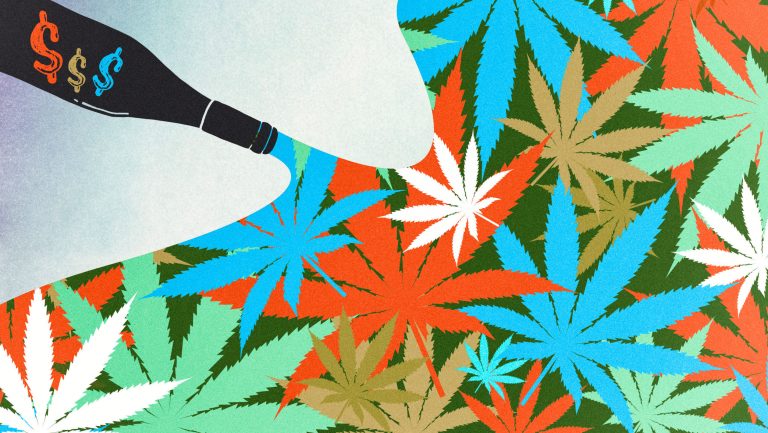
What Drinks Companies Need to Know About Investing in Cannabis
Wine & Weed Symposium panelists explore the challenges of the growing industry—and the opportunities it represents
More Competition, Less Consumption
Now that cannabis is legal in 11 states, with more sure to follow, wineries will have to do more to convince consumers that wine is a “necessary” luxury that enhances meals in a way that cannabis—or even other beverages—can’t. Even if they succeed, some say, wine consumption will likely decrease in the coming years.
“My clientele are pretty much baby boomers and people a little bit younger,” says Maple Creek’s Rodrigues. “They’ve gotten older and they’re drinking less, so we’re trying to capture millennials. They think wine is what their parents drink, so we’re competing with cannabis, craft cocktails, and craft beers. What I’m seeing is more competition for luxury spending, and a little bit of a decline in sales.”
Still, Rodrigues, a longtime medicinal marijuana user, looks forward to the day when cannabis will be legal federally. “If they dropped it off Schedule 1 [which designates cannabis as an illegal substance with no medicinal value],” he says, “I would be planting it.”

Dispatch
Sign up for our award-winning newsletter
Don’t miss the latest drinks industry news and insights—delivered to your inbox every week.
Tina Caputo is a writer based in Northern California who covers wine, beer, food, and travel. She was formerly the editor in chief of Vineyard & Winery Management magazine, and her work has appeared in Wine Enthusiast, Visit California, Sonoma magazine, the San Francisco Chronicle, and many other publications. She also produces the podcast Winemakers Drinking Beer.

